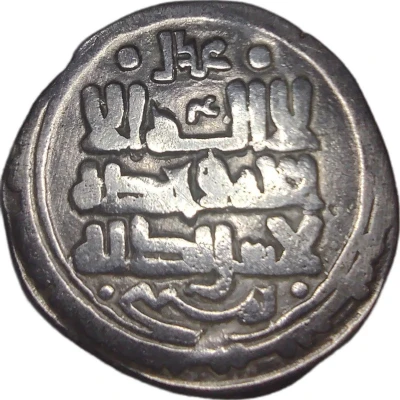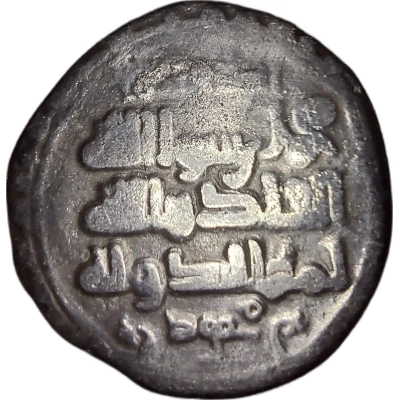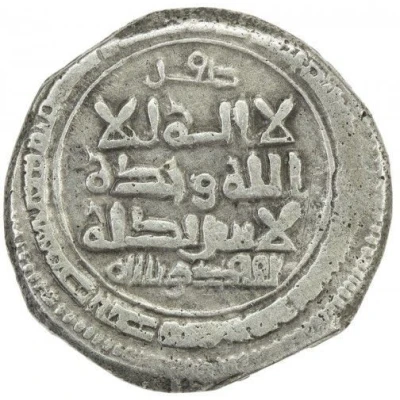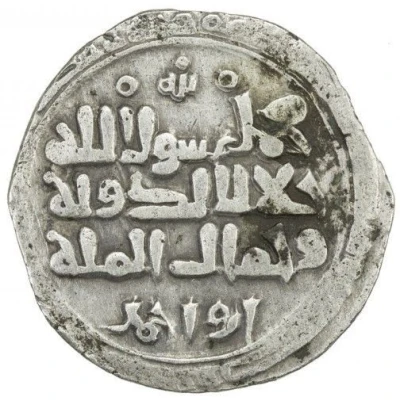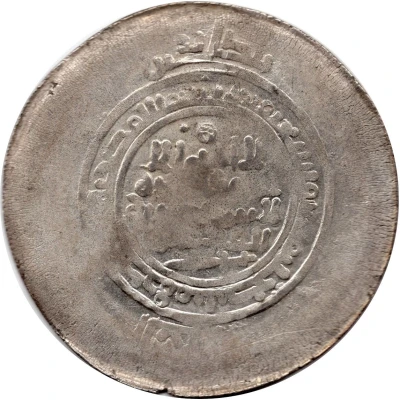
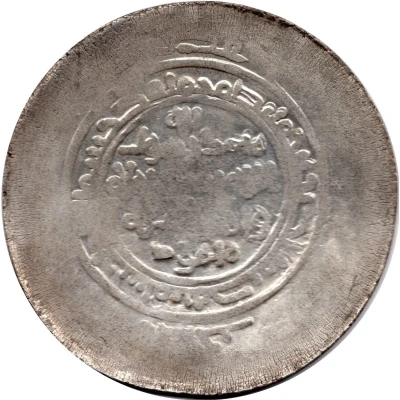

© Blake S
Multiple Dirham - Mahmud
389 (999-1007) years| Silver | 10 g | 48 mm |
| Issuer | Ghaznavid dynasty |
|---|---|
| Sultan | Mahmud (998-1030) |
| Type | Standard circulation coin |
| Year | 389 (999-1007) |
| Calendar | Islamic (Hijri) |
| Value | Dirham (0.7) |
| Currency | Dinar (977-1186) |
| Composition | Silver |
| Weight | 10 g |
| Diameter | 48 mm |
| Thickness | 0.9 mm |
| Shape | Round (irregular) |
| Technique | Hammered |
| Orientation | Variable alignment ↺ |
| Demonetized | Yes |
| Updated | 2024-10-05 |
| Numista | N#370150 |
|---|---|
| Rarity index | 97% |
Reverse
Kalima, Mahmud and his titles, enclosed in a circle centre. One marginal inscription.
Lettering:
محمد رسول الله
يمين الدوله و امين المله
محمود
Translation:
Muhammad is the Messenger of God
Yamin al-Dawlah wa Amin al-Millah
Mahmud
Edge
Plain
Comment
Mahmud of Ghazni reigned from 389-421H (999-1030AD) as Sultan of the Ghaznavid Empire. Starting as a Samanid vassal in Afghanistan, he would end it leaving behind an empire stretching from Iran to India. He is best known for being the first ruler to adopt the title "Sultan", and to lead a large Muslim army into India.Mahmud's Ghaznavid coinage began in 389H, the same year he assumed independence and received titles from the Abbasid Caliph. (Mitch WI, Page 148)
Multiple dirhams were struck only under Sebuktegin, Isma‘il and Mahmud, mainly at Andaraba. Quality and fineness appear to be similar to previous Samanid issues... Nearly all struck at Andaraba in 389, with sword below the obverse field and the name Balkategin atop the obverse margin... A few later dates in the 390s are known for the mints of Andaraba and Warwarliz, terminating in 397, all very rare. (Album, page 178-179).
Interesting fact
One interesting fact about the Multiple Dirham - Mahmud 389 (999-1007) coin from the Ghaznavid dynasty is that it features a unique blend of Islamic and Hindu influences in its design. The coin's obverse side features the name of the ruler, Mahmud, in Arabic script, while the reverse side depicts a Hindu deity, Lord Shiva, seated on a throne. This blending of religious symbols reflects the cultural diversity of the Ghaznavid Empire, which stretched from modern-day Afghanistan to northern India.
